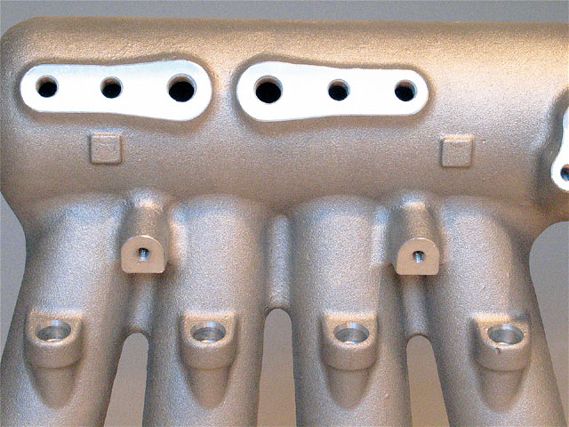 | D16 Power - Edelbrock Intake Manifold
| D16 Power - Edelbrock Intake Manifold
While most Honda nuts always go for broke with a DOHC engine there are the few that either don't have the money to swap out to a twin cam power plant or just simply choose to make the most of what they were dealt. While our option is to always go with the big guns you can't argue that the 1.6-liter single overhead cam can still battle with the big boys. Let's not forget, Bisi Ezerioha still sports the SOHC in drag competition and hold's a title of third fastest FWD naturally-aspirated Honda in the world. He would kill me if I didn't add that in. Considering the difference between first and second fastest is a mere seven tenth's goes to show all hope is not yet lost.
The factory rating on a D16Y is 127 horsepower at the flywheel, which doesn't say much about the Civic, but then again the vehicle is backed up by almost most every aftermarket company in the States. From any type of internal engine part to specific body parts, the Civic has been showered with gifts from the aftermarket.
When Edelbrock first came out with their B series intake manifold, its design was for high-rpm race engines. For the SOHC market the company decided to come out with a Performer X with its design based on street performance. The manifold comes in cast aluminum, making it durable and lightweight. While its construction alone is something to boast about it's real design is found in its airflow characteristics.
Plenums are always rumored, "If it's bigger then it's better." This is not always true, especially when we are talking all-motor trim. Think of the plenum as an air distributor to the cylinders and it's volume work in conjunction with an engine's camshaft profile and engine displacement. By merely building the biggest plenum you can fit under the engine bay for a normally-aspirated vehicle you sacrifice air velocity under vacuum and aerodynamics within the intake ports, resulting in inefficient combustion. The Edelbrock unit is larger than factory but only by so much. One of the key characteristics is in the angle at which the throttlebody is positioned. By adding a kink in it airflow is directed much more evenly throughout the engine's four cylinders. One of the downfalls to this modification is that the vehicle's air intake needs to be modified to fit the manifold. At the time that this was being written, AEM had already come out with an Edelbrock-specific air intake. In the case of the factory Honda intake, it fires its throttlebody in a direct line of the plenum. This causes the number three and four cylinders to go lean. Also increasing an even airflow is the manifolds extended end tank on the manifold. This is the opposite end of the plenums throttlebody side. By extending the end tank beyond the number one cylinder's intake runner, the airflow is distributed more evenly. One of the last airflow characteristics built into the Edelbrock Performer X is its longer and more direct intake runners. A common rule of thumb is that the longer the runners, the more torque can be produced. Not only did Edelbrock lengthen the runners they also straightened them out lining the runners up directly with the angle of the cylinder head's intake port to produce a more efficient combustion. OK, enough of the high-tech gibberish, it's now time to prove its theory on the dyno as well as find out how easy it is to install on an SOHC Civic.
Testing was performed on a Superflow chassis dyno. Installation was straightforward. To start with, the electronic idle air control solenoid's water lines needed to be extended since the plenum sits a little farther back from its original position. We found out that's what the extra hose was for. Since our vehicle didn't need any of the extra vacuum ports we used the plugs provided with the manifold to plug the extra holes. One of the only major modifications made was to the intake pipe. By cutting the intake pipes bend section in half and clamping the longer section back in the silicone connector, we were able to get the original AEM intake on the vehicle to fit. However, if you do run it as a ram air, the intake's mounting brackets will not fit unless you replace the straight silicone connector with one that is double in length. In th end, if you buy the manifold it would be much better to get it with the AEM Edelbrock-manifold-specific air intake. On the dyno the Civic baselined 113.0 horsepower then picked up an additional 5.7 horsepower with the Performer X manifold giving it a peak of 118.7. Most of the power was realized 5900 to redline with a few extra ponies gained from 3200 to 4500. Torque was also picked up in the mid range section as well as the high rpm area. Peak output started at 93.7 @ 6200 rpm and with the manifold the torque hit 96.8 at the same rpm level.
While most have moved on to the DOHC B Series, the few lucky souls that have remained to stick with their D16 now have one more item to add to the SOHC power bin. As we stated early, there isn't a part on a Civic that can't find aftermarket replacement and with Edelbrock's new Performer X manifold now on the shelves, we can only guess what they will create next for the D16 engine.
